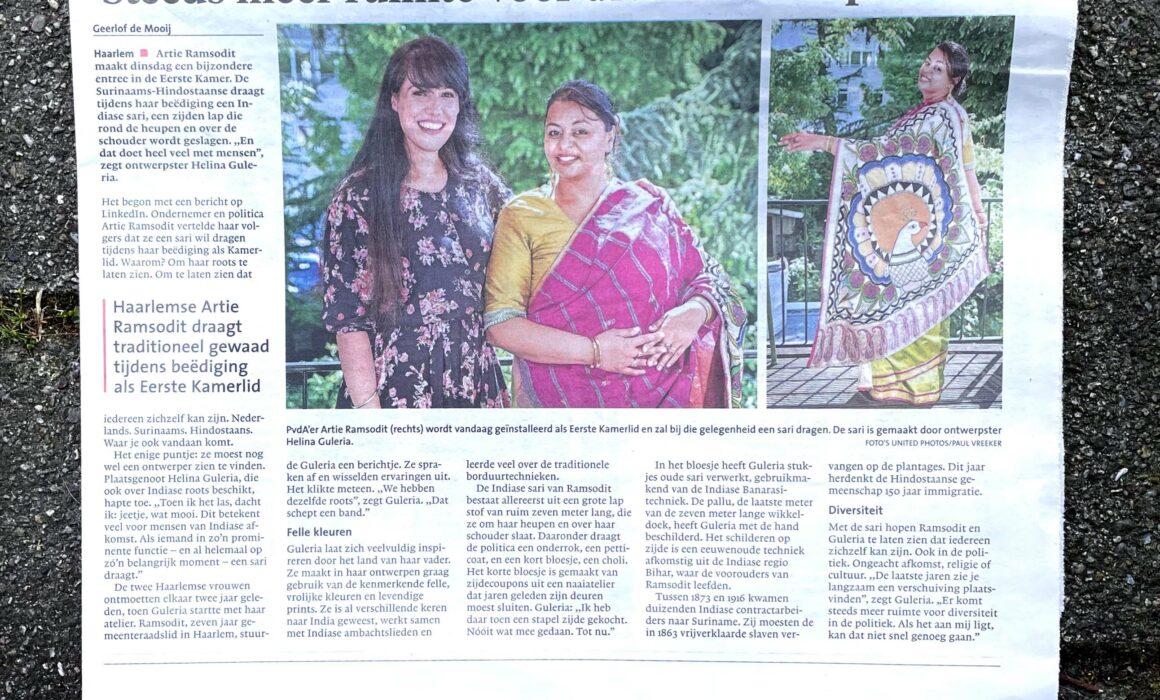Haarlems Dagblad
More and more room for diversity in politics
Haarlem – Artie Ramsodit will make a special entrance to the Senate on Tuesday. During her swearing-in ceremony, the Surinamese-Hindostan wears an Indian sari, a silk cloth that is wrapped around the hips and over the shoulder. “And that affects people a lot,” says designer Helina Guleria.
It started with a message on LinkedIn. Entrepreneur and politician Artie Ramsodit told her followers that she wants to wear a sari during her swearing in as a member of parliament. Why? To show her roots. To show that everyone can be themselves. Dutch. Surinamese. Hindustani. Wherever you come from.
The only point: she still has to find a designer. Her fellow townsman Helina Guleria, who also has Indian roots, accepted. “When I read it, I thought: wow, how beautiful. This means a lot to people of Indian descent. When someone in such a prominent position – and especially at such an important moment – wears a sari.”
The two women from Haarlem met each other two years ago, when Guleria started her studio. Ramsodit, who has been a municipal councilor in Haarlem for seven years, sent Guleria a message. They met and exchanged experiences. It clicked immediately. “We have same roots,” says Guleria. “That creates a bond.”

Bright colors
Guleria is often inspired by her father’s country. She likes to use the characteristic bright, cheerful colors and vibrant prints in her designs. She has been to India several times, works with Indian artisans and learned a lot about the traditional embroidery techniques.
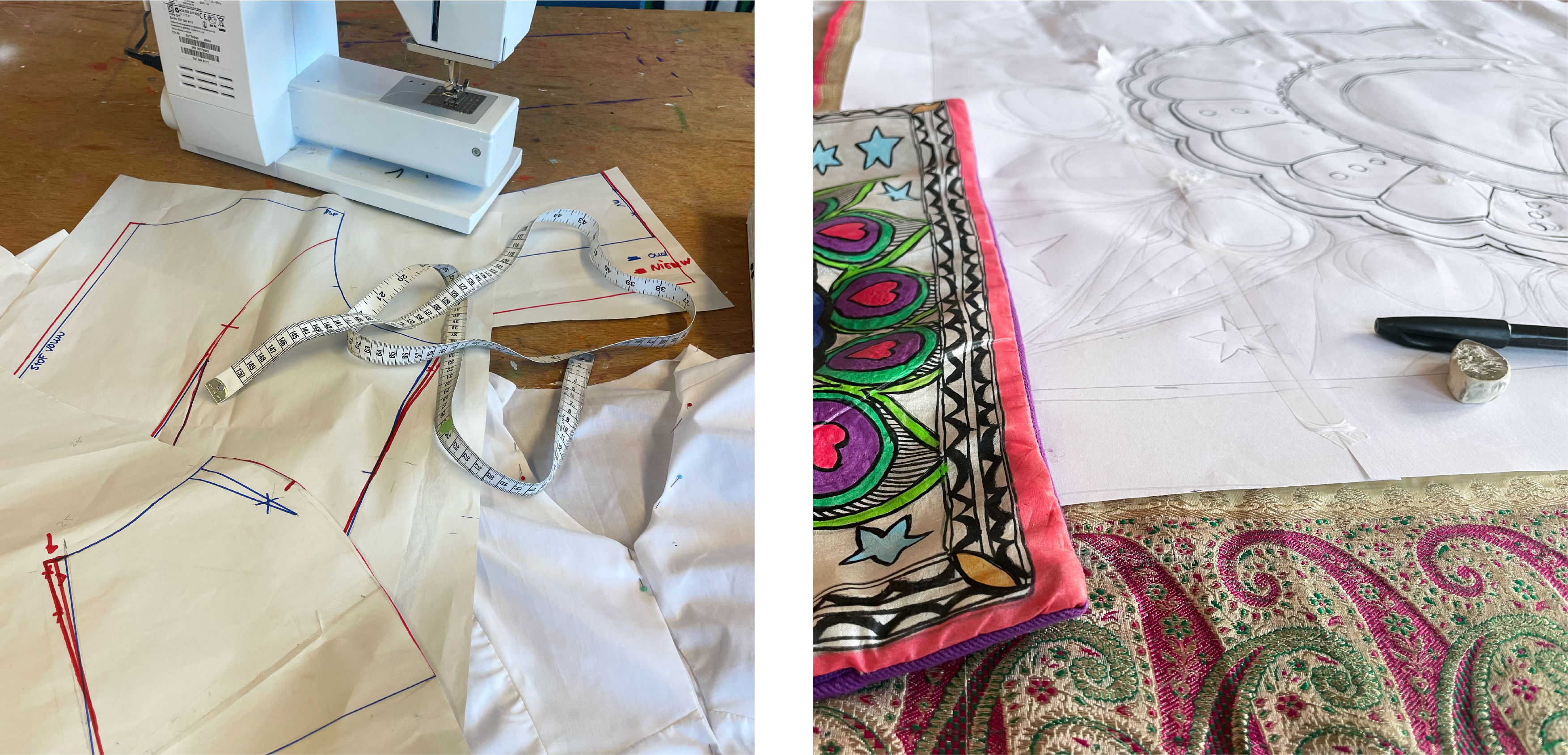
Ramsodit’s Indian sari consists first of all of a large piece of cloth more than seven meters long, which she wraps around her hips and over her shoulder. Underneath, the politician wears an underskirt, a petticoat, and a short blouse, a choli. The short blouse is made of silk coupons from a sewing workshop that had to close its doors years ago. Guleria: “I bought a pile of silk there. Never done anything with it. Until now.”
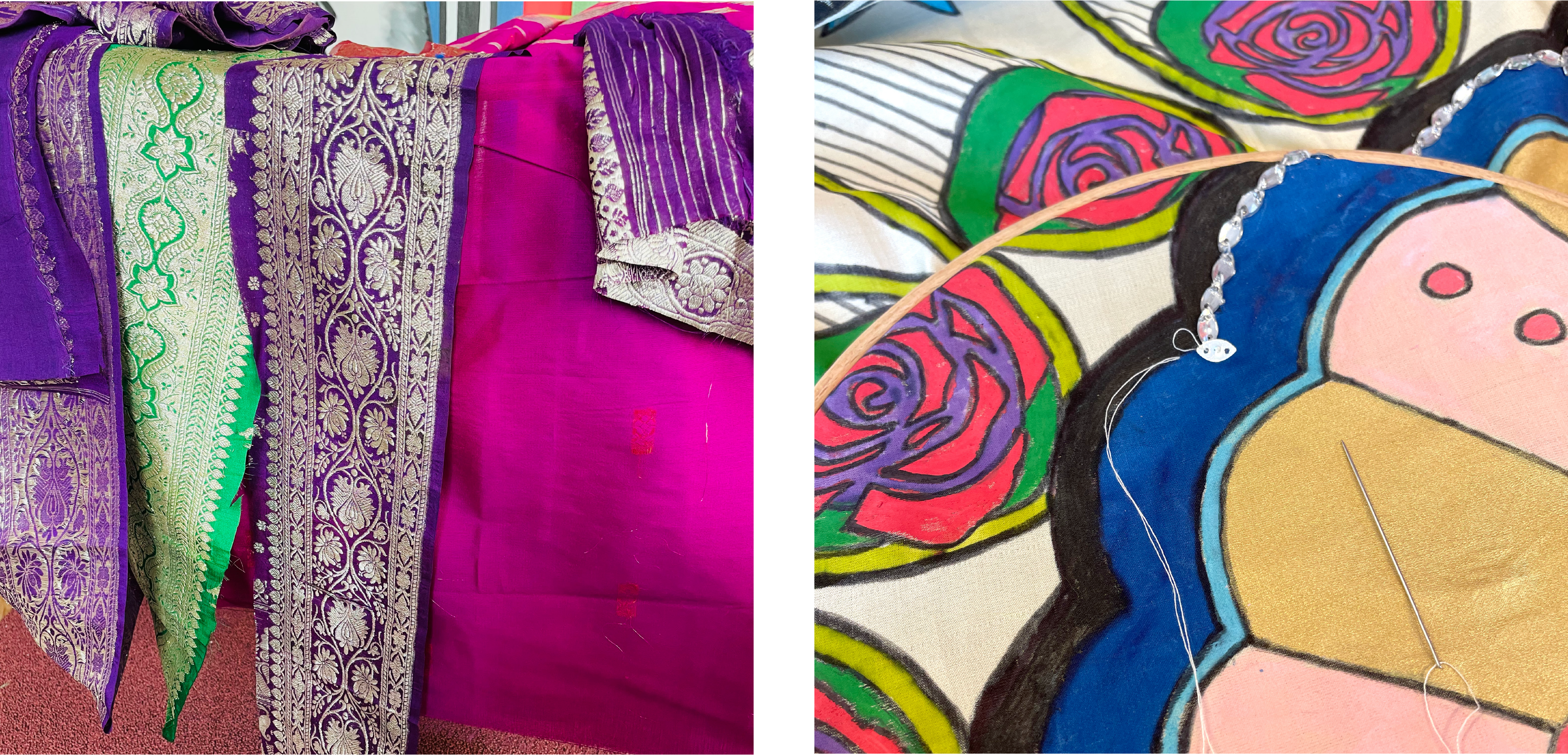
Guleria has incorporated pieces of old sari into the blouse, using the Indian Banarasi technique. The pallu, the last meter of the seven meter long wrapping cloth, was hand painted by Guleria. Silk painting is an ancient technique originating from the Indian region of Bihar, where Ramsodit’s ancestors lived.
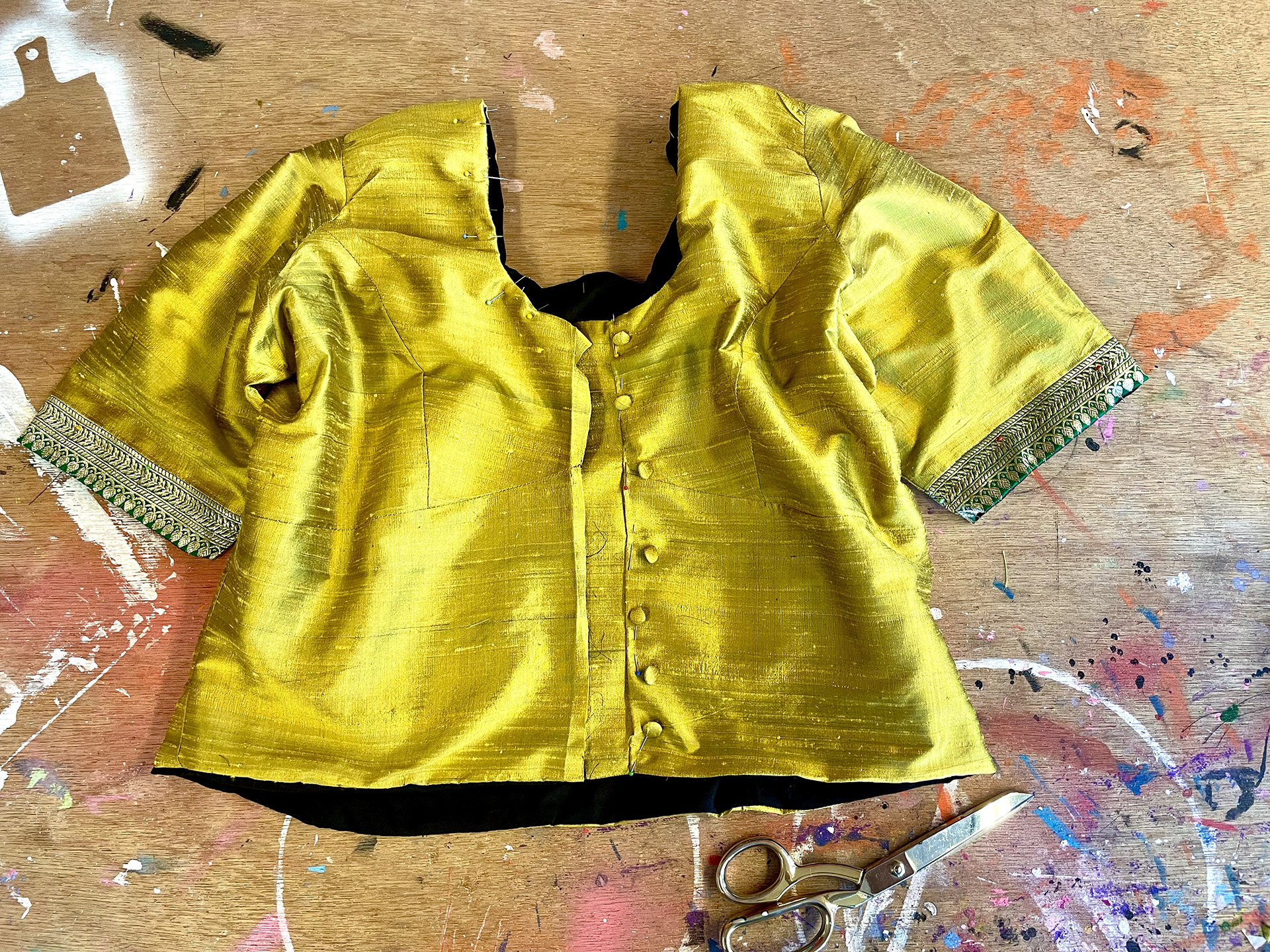
Between 1873 and 1916, thousands of Indian contract workers came to Suriname. They had to replace the slaves declared free in 1863 on the plantations. This year the Hindustani community commemorates 150 years of immigration.
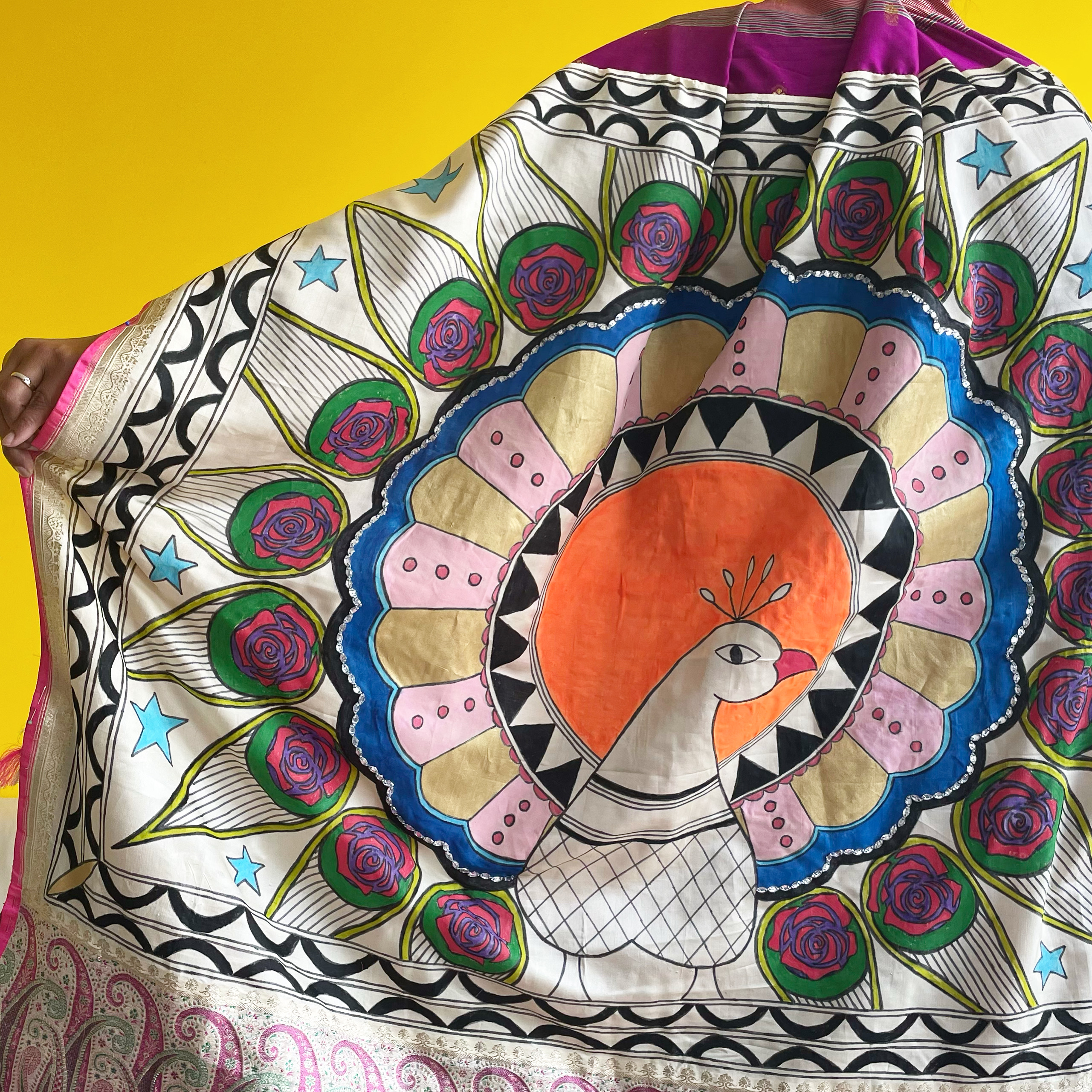
Diversity
With the sari, Ramsodit and Guleria hope to show that everyone can be themselves. Also in politics. Regardless of origin, religion or culture. “In recent years, you have slowly seen a shift taking place,” says Guleria. “There is more and more room for diversity in politics. If it’s up to me, it can’t go fast enough.”

